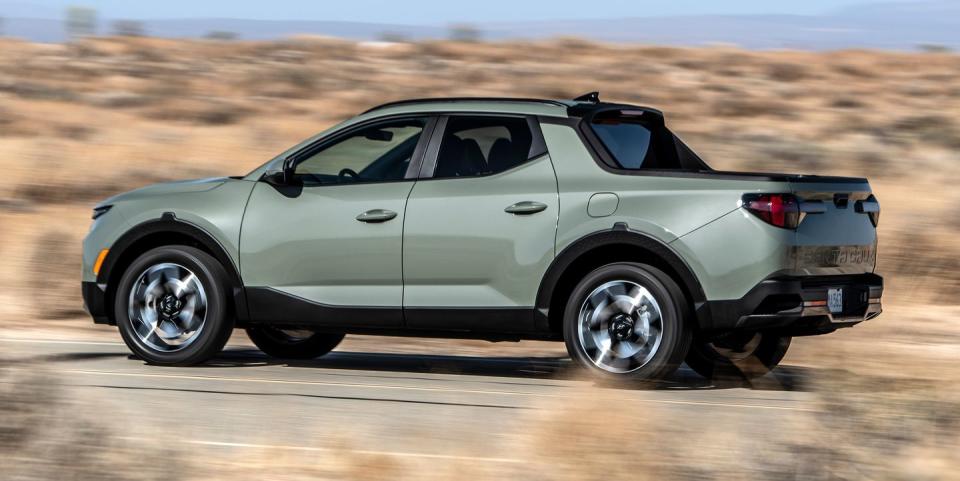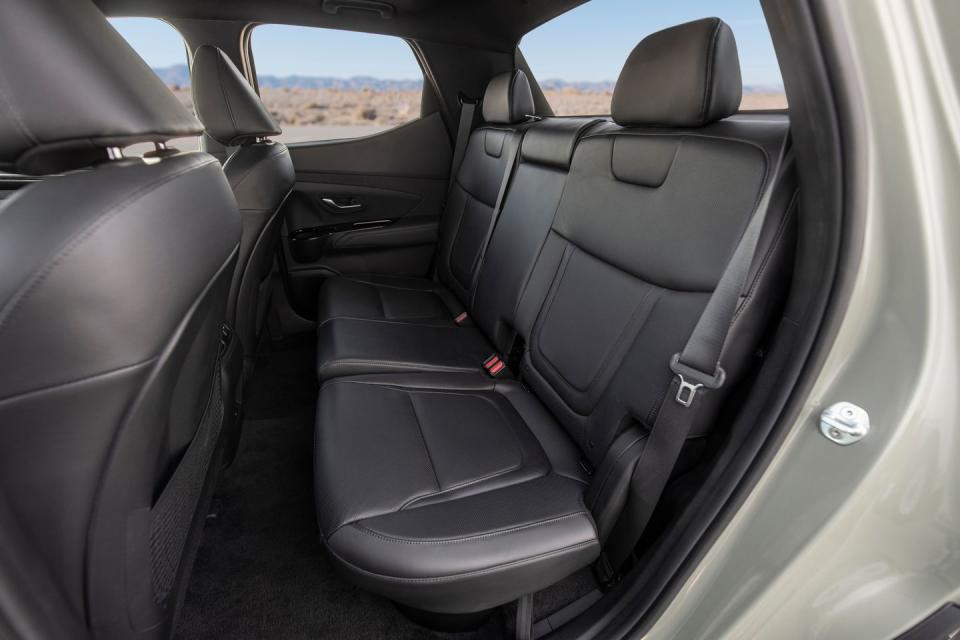2022 Hyundai Santa Cruz Is a Small-Pickup Version of the Tucson

Embracing a legacy of unibody pickups is the new Hyundai Santa Cruz, which will be available this summer.
A turbocharged 2.5-liter four will be available offering more than 275 horsepower.
The Santa Cruz shares much of its engineering and production plant, as well as its looks, with the new Tucson crossover.
Hyundai prefers the term "Sport Adventure Vehicle" over "truck" to describe the new Santa Cruz. Okay, whatever. But it sure looks truck-ish, if not strictly a truck. At its core, the Santa Cruz is—to oversimplify—the new 2022 Tucson shorn of its roof aft of the second-row seat. And that's an idea that goes back at least to the 1957 Ford Ranchero and the 1959 Chevrolet El Camino. Maybe the idea goes even further back than that, to the first owner who cobbled together cargo bodies for their Model T. Point is, the Santa Cruz is new, but the notions behind it aren't.

Designed primarily in Hyundai's California studios, the Santa Cruz has an angular ruggedness that's missing from the Tucson. It's not merely another pickup, but it's not strictly a traditional truck, either in looks or capability. A distinctive design element is the daytime running lights that emerge from behind the grille to make a sort of segmented cascade down each side of Santa Cruz's face. It's attractive, even if it's not shy.
The Santa Cruz's 118.3-inch wheelbase is 9.8 inches longer than that of the new Tucson, and the 195.7-inch overall length is up 12.4 inches. That wheelbase is also 14.0 inches longer than that of the 2002–2006 Subaru Baja to which the Santa Cruz seems a spiritual successor. However, the old Subaru's 193.3-inch overall length is only 2.4 inches shorter than the new Hyundai's. If the Subaru Baja's rear overhang has been haunting your dreams, here's an escape from the nightmares.
But while it's longer, much of the Santa Cruz's unibody structure is directly connected to the Tucson. The inner steel stampings—most of the floorpan, nose architecture, door structures and windshield surround—are common. The actual windshield glass will swap between the two vehicles. Inside the Santa Cruz, the relationship between the two is even more obvious as the open-bed machine shares almost all its innards with the crossover. That includes the flat-panel instrumentation forward of the driver and the center stack with its display. The one immediately apparent interior difference between the two is that the Tucson uses a push-button transmission selector between the front seats, while the Santa Cruz uses a more traditional shift lever.

Suspension design is also in common with the Tucson. Confirming expectations, the front end is held up by a pair of MacPherson struts, while the tail rides on a multilink system. In the things-with-open-beds category, the Santa Cruz joins the Honda Ridgeline in the independent-rear-suspension club. And, like the Honda, the Santa Cruz offers a trunk behind the wheels that can be used as an ice chest.
Wheels will range between 18 and 20 inches, and the tires will mostly be all-season rated and on-road-oriented.

 Yahoo Autos
Yahoo Autos 